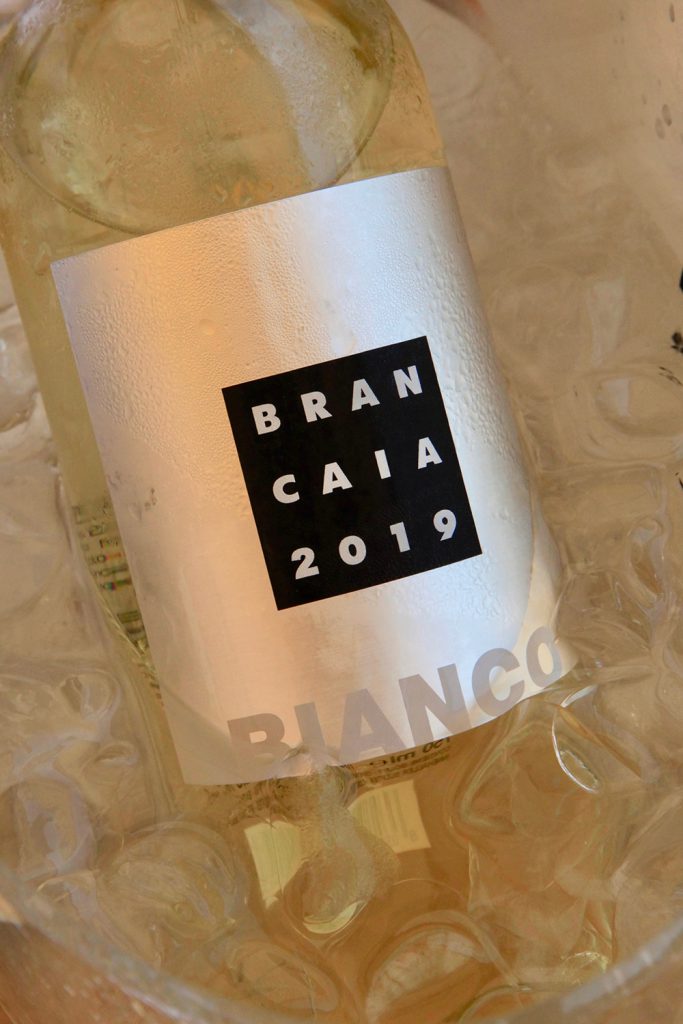“It was the summer of 1993 and I was an architecture student in Zurich, but I could no longer find the right motivations in what I was doing. A few weeks immersed in the nature of Brancaia, my parents’ estate in Chianti, were enough to make me find my way. I returned to Switzerland with the idea of dedicating myself to wine and, to test my decision, even before enrolling in oenology school, I spent a year at the Domaine des Balisiers in Peney (Geneva), which, with its 30 hectares of vineyards, was at the time the largest organic Swiss winery. It was truly an experience of great impact for me “. This is how Barbara Widmer, winemaker at Brancaia, always describes her debut in the world of wine.
After such a start, it is not surprising that respect for nature and, consequently, sustainable agriculture have always been at the center of Brancaia’s production philosophy. The official certification for the vineyards arrived in 2019, but many practices were already heading in the direction of greater sustainability and less impact on the environment. Well before the 2016 decision to undertake the three-year conversion process, pesticides and insecticides had been totally banned, green manure crops were used to fertilize in a natural way and bring organic matter to the soil, solar panels had been installed.

But certification is not an end point for Brancaia. Day after day, the winery led by Barbara Widmer works and is committed to a viticulture that is increasingly innovative, sustainable, resilient, which aims at a qualitative production, without penalizing biodiversity, limiting the excessive consumption of natural resources and protecting workers and the entire community.
In the vineyard, Brancaia’s “green” philosophy, under the guidance of agronomist Alessandro Di Tardo, is based on a low-demand and high-performance viticulture model, which leads to an optimal vegetative-productive balance. The increase in plantation density and the use of green manure crops reduce the vigor of the plants, a guarantee of better quality of the grapes, but also of fewer treatments and, consequently, of lower polluting emissions. Furthermore, the fertilization of the land is planned by carrying out periodic checks not only of the land, but also using specific analysis of the leaf apparatus of the vines. Every single treatment in the vineyards is carefully studied. The control of the main fungal diseases takes place through weather stations located in the vineyards, which, by monitoring the progress of the meteorological parameters, provide information on the progress of sporulation and guide the use of treatments. In addition, living in the heart of the estate, Barbara walks daily through the vineyards together with Alessandro and, with the experience gained over the years, they can adapt the mathematical models if necessary. Thanks to the combination of experience and technology, we have been able to significantly reduce treatments. In short, in the Brancaia model, each component is fundamental with its own contribution and even insects are no exception: the impact of scale insects and lepidoptera potentially harmful to the vines is in fact regulated with attractive traps or thanks to the precious contribution of antagonistic insects. All these good practices and the photosynthesis that takes place in our vineyards over the years have led us to a negative CO2 footprint: in fact, we are able to amply compensate for the carbon dioxide produced in the fermentation and winemaking processes.
Brancaia IL BIANCO
Brancaia IL BIANCO is a blend of Sauvignon Blanc (90%), sourced in the vineyards in Castellina in Chianti, with a touch of Viognier, grown in the vineyards in Maremma. The grapes are harvested and brought to the cellar in the early morning, when it is still cool, and also fermentation, carried out only thanks to indigenous yeasts, takes place at low temperatures (about 16 ° C). The choice not to carry out the malolactic fermentation gives the wine a further, pleasant freshness, while it is thanks to 5 months on the lees, for 10% of the wine in barriques, for the rest in steel vats, that Brancaia IL BIANCO acquires its structure. The bouquet is characterized by primary aromas, with fruity hints of peach and floral notes that accompany a vegetal nuance, typical of Sauvignon. A very nice structure and a vibrant finish. Brancaia IL BIANCO 2020 is perfect to go with seafood dishes, but it is also the ideal match for pasta dishes with mushrooms and vegetables: why not try it with an asparagus risotto?

Brancaia ROSÉ
For Brancaia ROSÉ, Merlot grapes are sourced in the vineyards in Maremma and harvested very early in the season, a choice motivated by the goal of making the most of the fruit’s acidity. And that is how it is our Brancaia ROSÉ: a fresh and intensely fragrant wine. A gentle pressing, at very low temperatures, begins immediately after the harvest, to allow the heavier parts to settle and to control the extraction of the anthocyanins, responsible for releasing the color. The must is then left to ferment at a low temperature in thermo-controlled steel vats, a slow and constant process of about two weeks. Aging on the lees lasts three months and the result is a rosé of refined freshness and elegance, characterized by a soft and bright color. Fragrant notes of citrus, berries, and white flowers. A brilliant and lively finish. These characteristics make Brancaia ROSÉ 2020 a perfect wine for an aperitif, but also an excellent pairing for vegetable dishes and seafood or shellfish crudités.


Interviste esclusive dal mondo del vino ed approfondimenti da chi fa del vino una ragione di vita, di business e di cultura.













